Cloth And Paper Planner Setup Ideas: What We Discovered When the Team Tried This System
Three weeks after Sarah brought her Cloth And Paper planner to that team meeting, five of us had our own systems. By week six, we'd developed completely different configurations despite starting with identical leather planners. This is what we learned about matching planning styles to how your brain actually works.
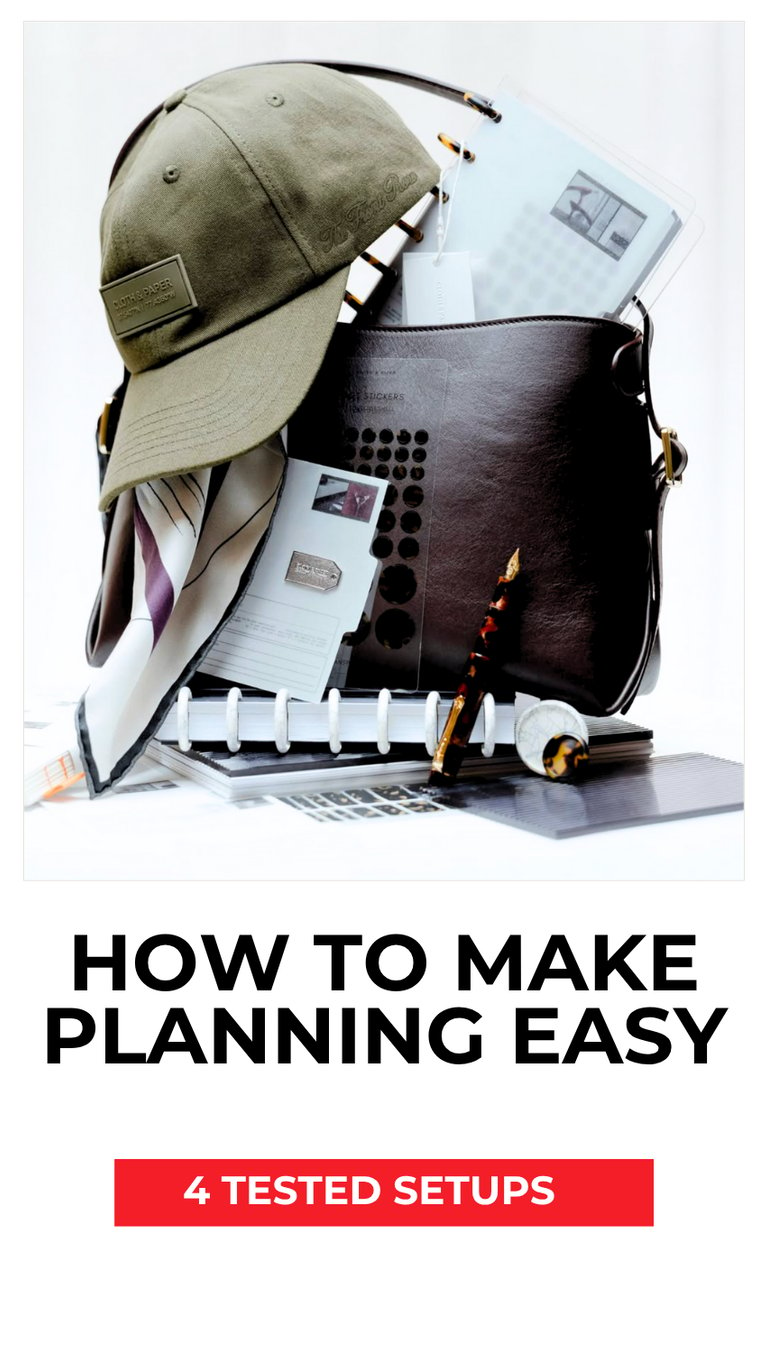

The mistake everyone makes is copying someone else's setup. You see a beautifully photographed spread and assume that layout will work for you. It won't. Not because the system is bad—because planning isn't about products. It's about honestly assessing how you think, what overwhelms you, and what you'll actually maintain past February.
The Real Question: Which of These People Are You?
Not which system looks best. Which problem feels familiar?
Can't see everything at once without panic? You need section-based planning with physical dividers.
Life changes every few months? You need quarterly rebuilds, not annual commitments.
Need extreme daily structure? You need time-blocking with evening rituals.
Work doesn't follow grids? You need minimal dates, maximum thinking space.
The setup that works isn't the one that photographs well. It's the one that matches how your brain actually operates under pressure in July, not how you wish your brain worked in January.


$260 - Heirloom Premium Leather Folio, CLOTH AND PAPER
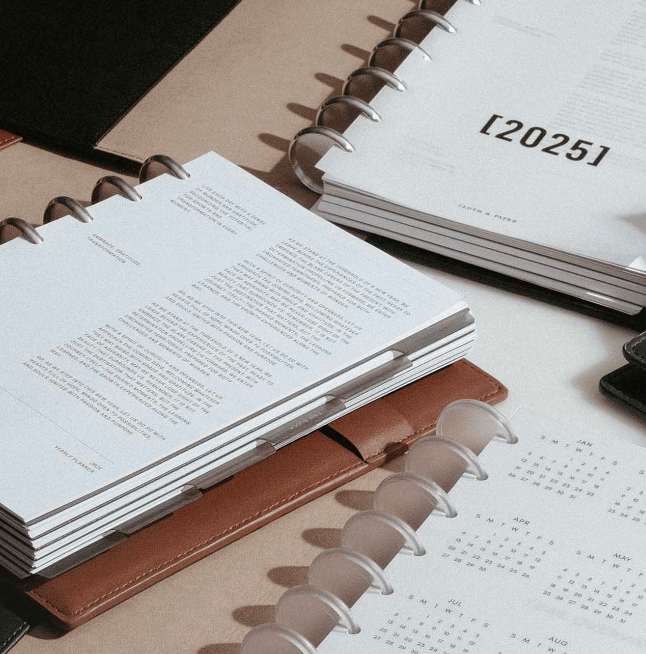

For People Who Can't See Everything at Once: The Section-Based Approach
Emma opened her planner and immediately felt her chest tighten. Work deadline, therapy appointment, grocery list, project notes—all in one chronological stream. Her brain couldn't prioritize when everything demanded equal attention.
The shift: physical separation between life areas. Not better organization. Permission to ignore things.
She uses coloured dividers to create zones she can actually avoid. Schedule lives behind one divider (opened daily). Work lives behind another (opened when working). Health tracking lives behind a third (opened weekly, sometimes skipped entirely). The cloth and paper planner setup doesn't force her to confront her entire life every time she checks tomorrow's calendar.
This works if: Seeing all your commitments simultaneously creates panic rather than clarity. You need psychological boundaries between contexts. You're comfortable with some sections getting more attention than others.
This fails if: You forget things that aren't visible. Out of sight actually means out of mind for you. Context-switching between sections feels inefficient rather than relieving.
How it looks in practice: Cloth and paper discbound systems with translucent dividers. Different insert types in each section. The specific inserts matter less than the mental permission to treat sections differently.
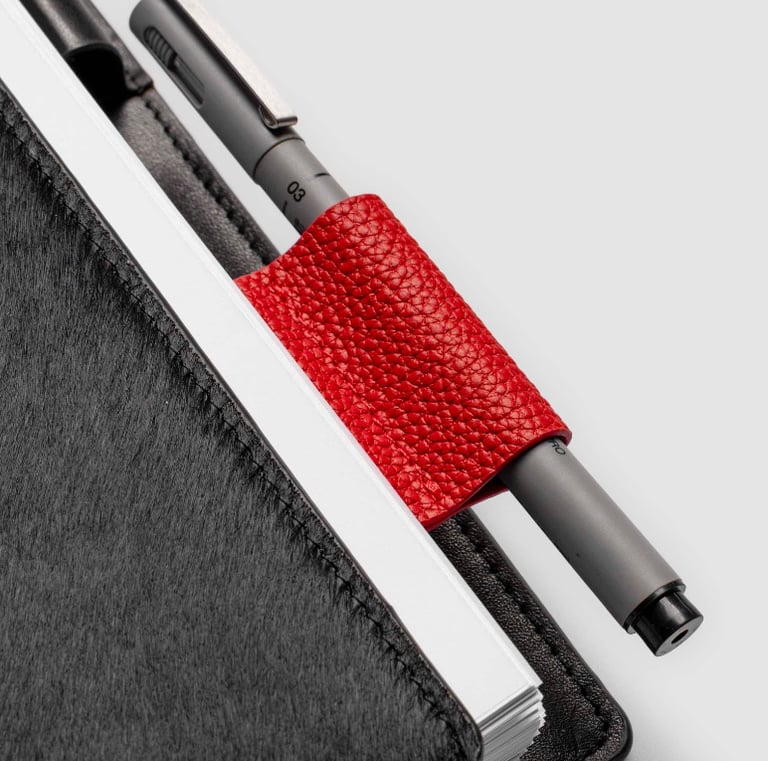

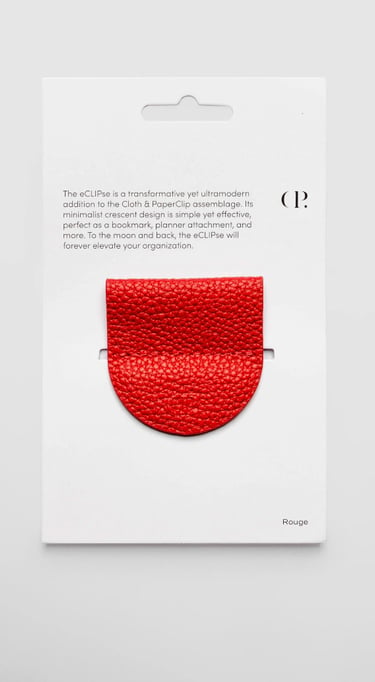

For People Whose Work Rhythm Changes: The Quarterly Reset
James built an annual system in January. By March, he was carrying around 200 pages that no longer matched his reality. His work had shifted from deep focus to constant meetings, but his weekly layout still assumed long, uninterrupted blocks. Using it felt like lying to himself daily.
The shift: planning in 90-day cycles instead of 12-month commitments.
Every quarter, he evaluates honestly. What layout actually served him? What gathered dust? What does next quarter need? Then he rebuilds—new dated pages, different weekly formats, fresh functional inserts. The old pages come out. No guilt, no "but I paid for these," just acknowledgment that what worked in winter might not work in spring.
This works if: Your work rhythm shifts seasonally. You're comfortable with regular system audits. The thought of rebuilding feels freeing rather than exhausting. You hate carrying irrelevant pages.
This fails if: Rebuilding quarterly feels like constant starting-over. You need "set it and forget it" systems. The quarterly cost of new pages bothers you more than using a system that doesn't fit.
How it looks in practice: Lighter planner with only current quarter's dated pages. Willingness to switch between different weekly layouts (vertical versus horizontal) based on current work mode. Archive mindset rather than accumulation mindset.
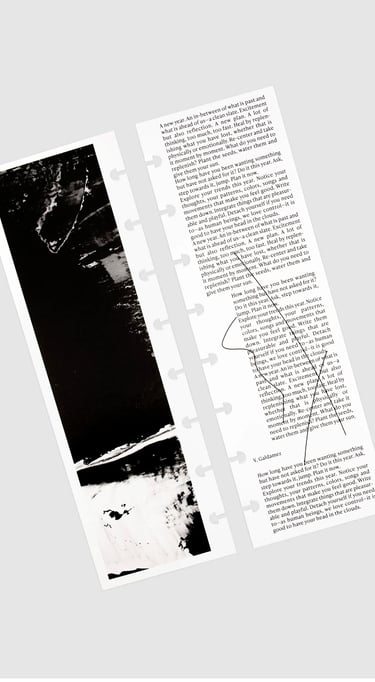

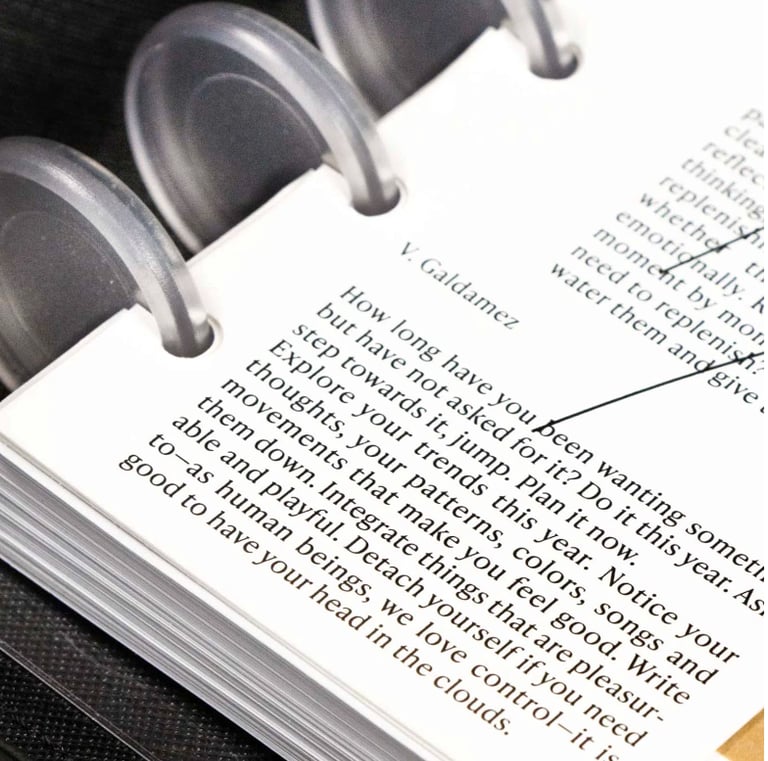

For People Who Need Extreme Structure: The Time-Blocker's Daily Planner Design
Rachel tried weekly planning. Every week looked perfect on Monday. By Tuesday, reality had already diverged from the plan, and she spent Wednesday feeling like she'd failed.
The shift: planning tomorrow tonight, not planning the week on Sunday.
Every evening at 8pm, she time-blocks the next day. Not optimistically. Not aspirationally. Based on what tomorrow actually looks like. Admin in one colour, creative work in another, meetings in a third. The blocks aren't aspirational—they're descriptive. "This is what tomorrow is" rather than "this is what I wish tomorrow could be."
This works if: Weekly planning feels too distant. You need to see hours, not just days. Decision paralysis in the morning derails your entire day. Extreme structure calms you rather than constraining you. You can commit to nightly planning rituals.
This fails if: You skip the nightly ritual more than twice. Your days are genuinely unpredictable. Hourly structure feels suffocating. You prefer flexibility over specificity.
How it looks in practice: Daily pages with space for detailed planning. Habit tracking that's realistic (three things, not twelve). Flags for deadline visibility. The discipline matters more than the products.
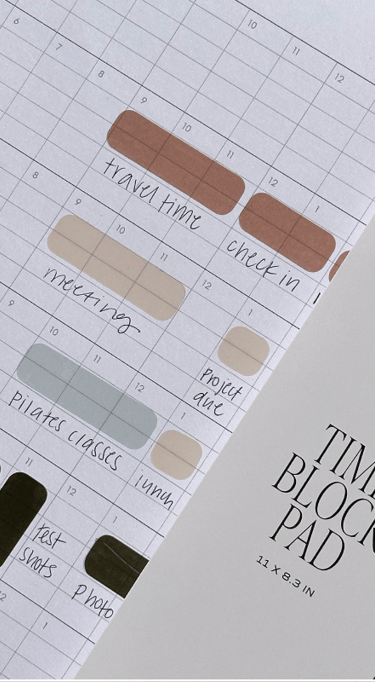

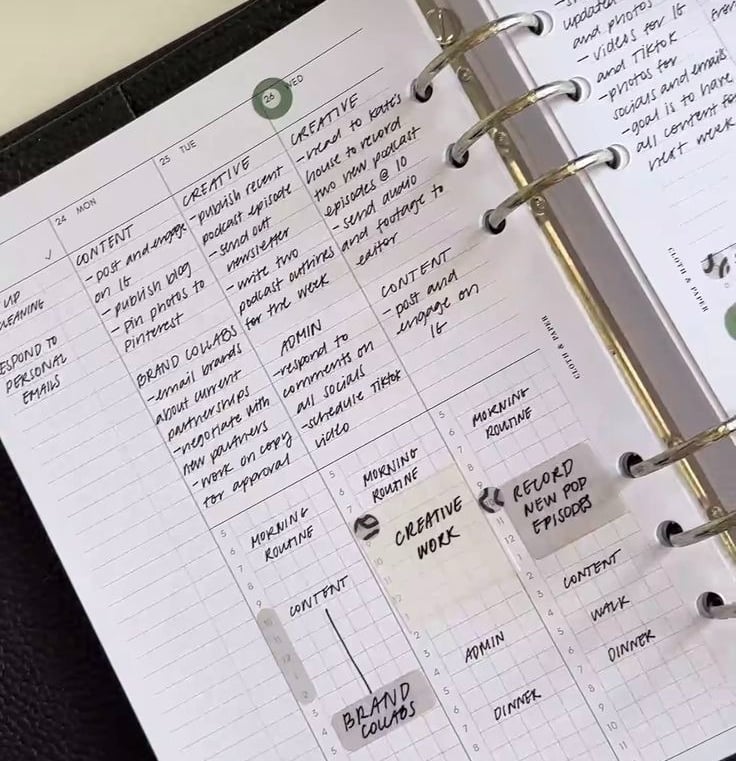

For People Whose Work Doesn't Follow Grids: The Creative Hybrid Leather Planner
Tom writes and designs. Traditional weekly planning made him feel perpetually behind because his work doesn't generate tasks in neat weekly increments. Projects emerge, develop, branch into other ideas, circle back months later. Forcing this into Monday-through-Friday structure felt violent.
The shift: admitting his planner isn't for productivity. It's for thinking.
He tracks hard deadlines in monthly spreads (because bills and clients don't care about creative process). Everything else lives in open-format pages where projects can sprawl and connect. Mind maps, sketches, half-formed ideas, notes that don't fit anywhere yet. The planner holds complexity without demanding it resolve into action items.
The leather planner matters here specifically. Tom needs something durable that won't fall apart when stuffed into bags between meetings and coffee shops. For creative work that lacks external structure, the physical quality of the planner itself provides consistency his schedule doesn't.
This works if: Your work is genuinely non-linear. You think by making connections, not lists. Empty space feels useful rather than wasteful. You're comfortable with a planner that doesn't scream productivity.
This fails if: Lack of clear tasks creates anxiety. You need external structure because internal structure doesn't exist. Blank pages feel like failure rather than possibility.
How it looks in practice: Minimal dated pages (monthly only). Lots of open-format pages (dot grid, blank, lined). The planner is a thinking tool that happens to track some dates, not a task manager.
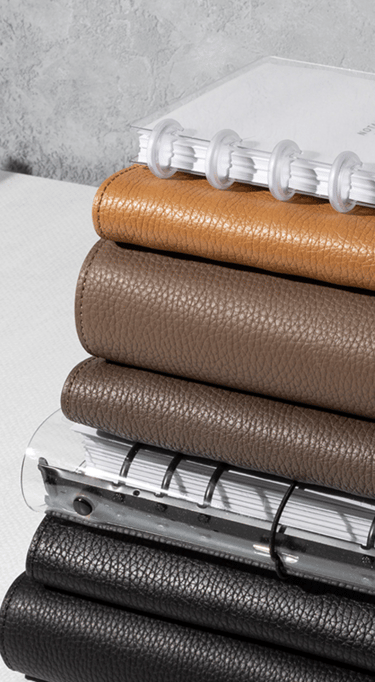

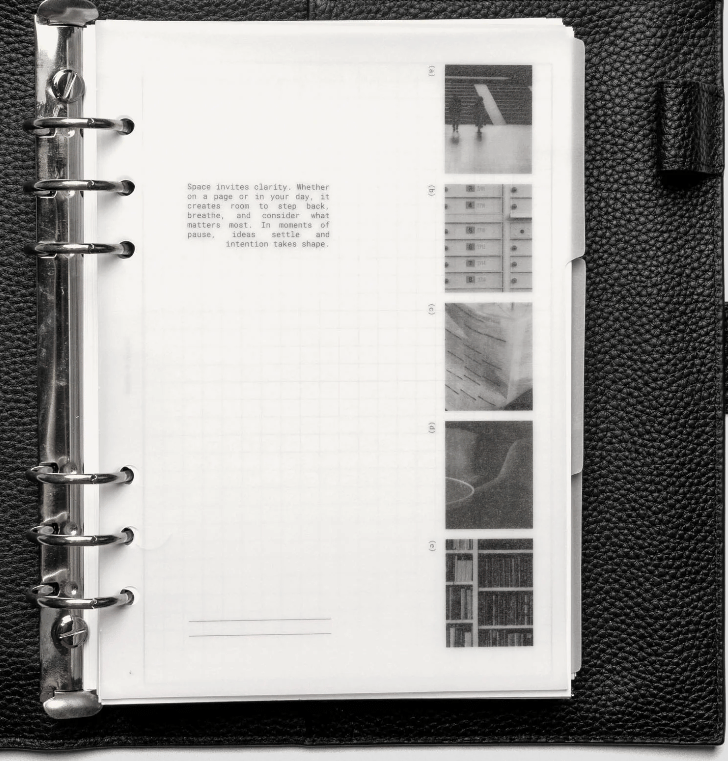

What Planner Accessories Actually Matter (And Why Most Don't)
The planning community loves decorated spreads. The problem: decoration and daily function aren't the same thing.
What lasted: Transparent flags that mark deadlines without covering information. Time-blocking stickers for people managing multiple simultaneous projects (not everyone needs these). Simple sticky notes for temporary thoughts that don't have homes yet.
What collected dust: Decorative flags that looked beautiful but obscured text. Elaborate sticker systems that created decision paralysis ("which sticker represents this mood?"). Anything that prioritised photography over speed.
The pattern: planner accessories that solved specific problems lasted. Accessories purchased to achieve an aesthetic didn't. When you're actually planning daily, friction matters more than beauty.
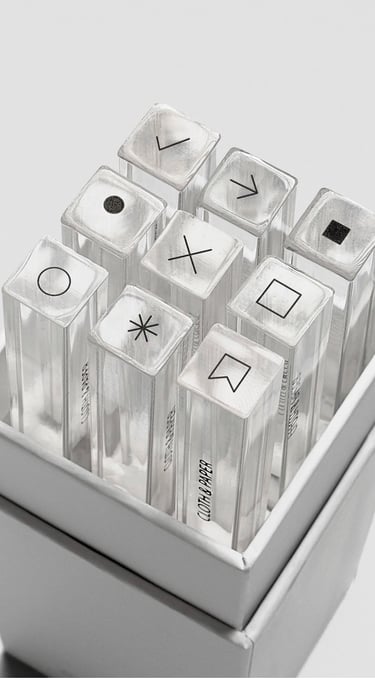

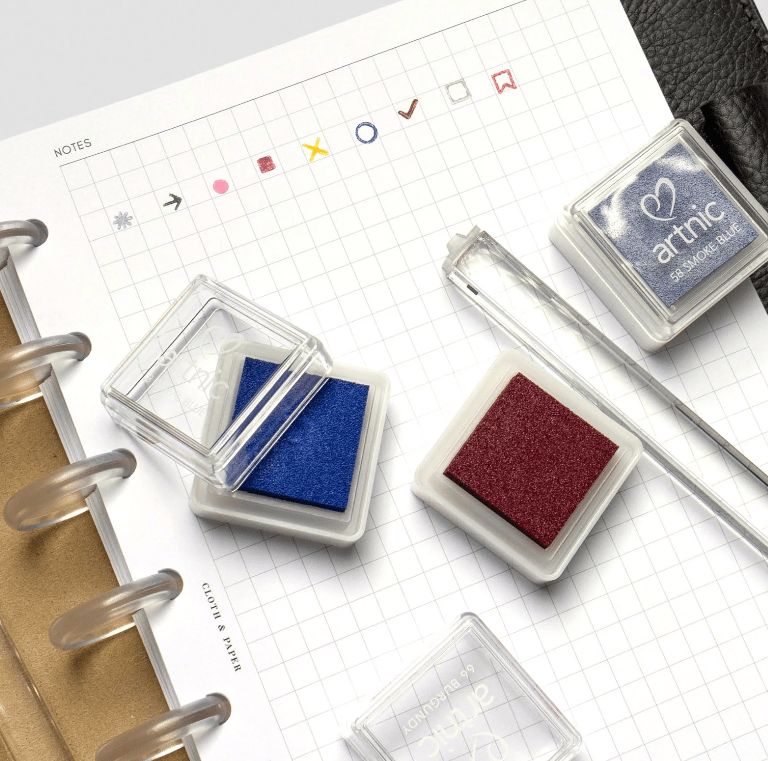

System costs: $215-285 USD (£175-230) | The real cost: Honestly assessing which person you actually are
Explore the system: clothandpaper.com
Free setup consultations available


